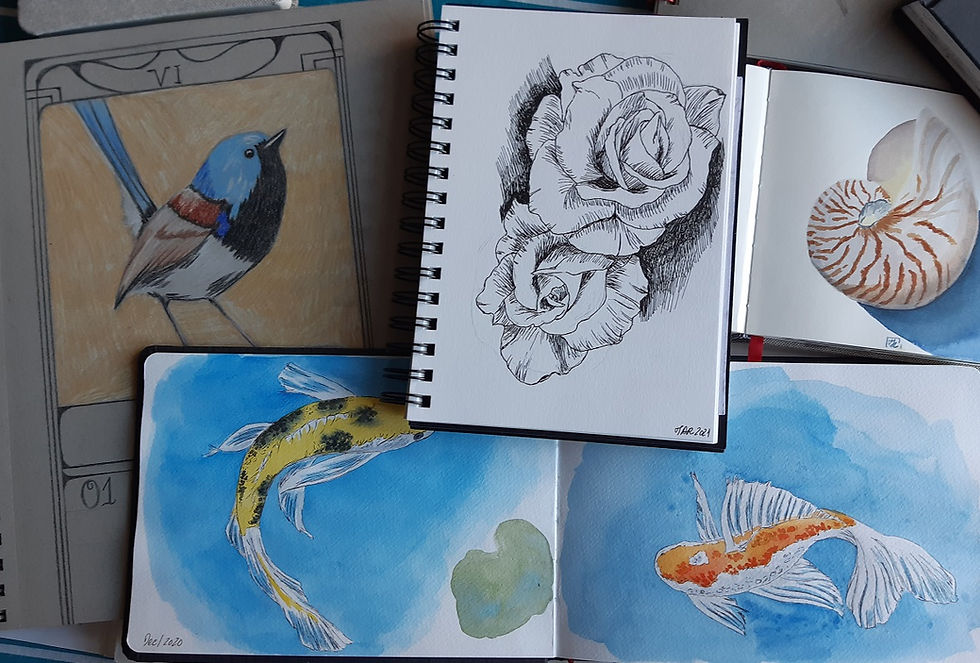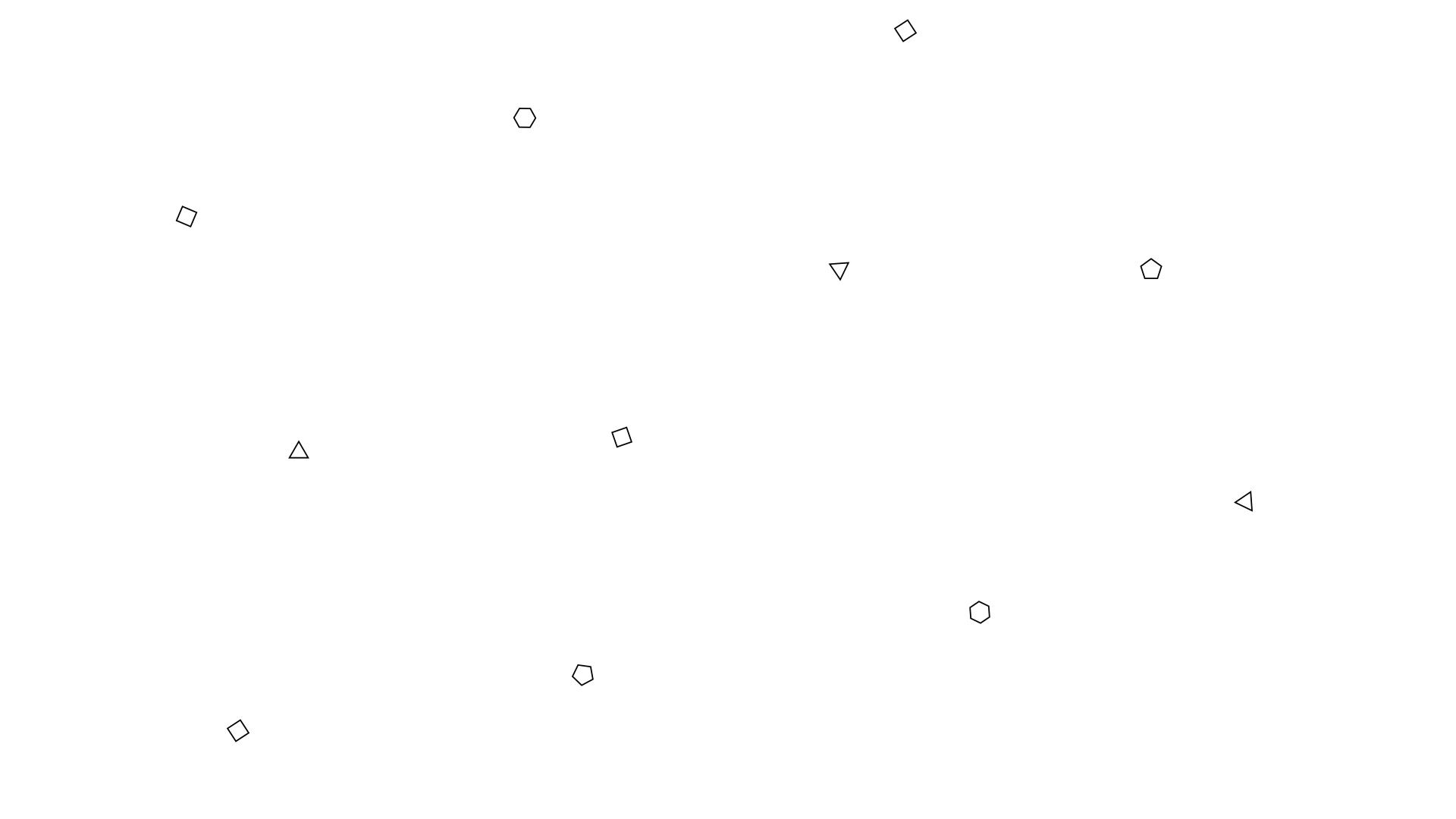5 Ways to built a sketching habit
- Joana Carvalho
- 21 de mar. de 2021
- 4 min de leitura
(1) MAKE IT SIMPLE
There is no point in wasting time setting up a still life for 30 mins if you only have 1 hour to draw/paint. Not to mention most of the times you just can't seem to find interesting objects around you to draw, or you're just simply not interested in those subjects. At least that happens to me a lot.
I am aware that a lot of professional artists say they only "draw on location", do "plein air" or "paint from life". Unfortunately for most people (even other professional artists) that is just impossible. Either you don't have the time or resources, or both to do that. That should not stop you from drawing or painting however. If you would like to draw magpie, do a google search and draw a magpie, if that's what you feel like. As long as your not selling your work it's fine to use liberally reference images - if you can, try to use websites that have free references, like pixabay or unsplash. There are more websites with free references, but these two are some of the most well-known.

Also, if you had a tiring day at work and just want to practice, it's good to go with simple subjects, like birds, flowers, etc. Like this: you'll most likely be able to finish the sketch, and if you do, you'll have a positive feeling and will be more inclined to do the same thing the next day. If you choose a complicated subject, like let's say a portrait, you'll most likely not finish it in one sitting. Then the next day you may not feel like continuing the same drawing. It's a common thing between artists of all kinds, to have a large number of unfinished pieces, either sketches or more complete works. If you keep it simple, it's more likely you'll actually finish your sketches/drawings.
(2) MINIMAL ART SUPPLIES
This one is related to the previous, if you have to take out a bunch of items to make a sketch, you'll feel less inclined to do so. At least I've realized that's the case with me. I'm really envious of people I see online who have the patience/time/space to do oil painting sketches. If I have to take out and set up my oil supplies, it will take me a good 20 mins and probably another 15 mins to clean up, in that time, I'll make at least one (maybe more) charcoal sketches for example.

I feel like there is an hierarchy of complexity for what art supplies are more easy to use for sketching. I would put them by this order: graphite/charcoal, pen and ink, color pencils, water-soluble graphite, watercolors, pastels (dry or oil), and last acrylics/oils.
So if all you have is 30 mins to sketch, don't bother taking out your pastels for examples, just go with a pen or a simple graphite pencil. If you have more time, than by all means use the fancy stuff. Just be realistic about what you can do with the time you have to sketch.
(3) GO MONOCHROME
If you really enjoy color thought, you might want to ignore this one.
But if what you'd like to do is practice getting shapes and proportions (and specially tone) right, than going monochrome might be helpful, since it removes one layer of complexity from the drawing/painting.
I find that for me, one of the best ways to sketch is just with a graphite pencil and/or a pen, I am actually trying to get use to sketching with a pen directly. So that my strokes become more confidant and I can just be faster at making a finished sketch.
(4) SKETCHBOOK AT HAND (ALWAYS)
Sometimes great ideas come at inappropriate times, if you have something to take a note, then it's an idea you can later develop. It's all about convenience and simplicity. This sketchbook should (ideally) not be bigger than an A5, so it's light and portable, but big enough to develop a small size drawing. I find A6 too small to work with for example, the limit for me would be a square format, like the sketchbooks shown below. I would also recommend buying a cheap sketchbook, because if it's fancy and/or expensive you'll be less inclined to draw on it.
In addition, if you have your sketchbooks more or less organized you can go back to old ideas, and try them again, from a new and different perspective you didn't have before - it's a bit like your personal encyclopedia of random ideas.
(5) DON'T POST ON SOCIAL MEDIA
It's very tempting to post everything you produce on social media. Specially if you don't produce that much, because you have limited time to draw/paint. At least, I feel really pressured to do so. Since the less often you post, the less likely it is for your post to show up, and then even when you do post, if you don't get many likes, you'll be left wondering what did you do wrong. So it's basically a rat's race and you'll never get to the end of it, since the goal post is always changing (i.e for example: changes in social media algorithms, trends, tags that are trending more than others, etc).
I think this can be particular bad if you do art as an hobby. You already have your work to stress about, that shouldn't bleed through to your hobby. That's your fun time.
So I think it's best to sketch just for the fun of it, and for practice and leave social media out of the equation.
These have come out from my personal experience, and I know they've worked for me, so they might work for you as well.
Hope these are useful for you and thanks for stopping by!


















Comentários